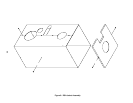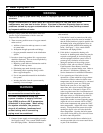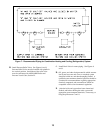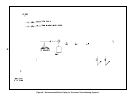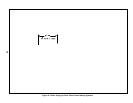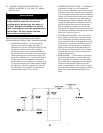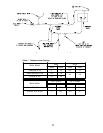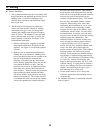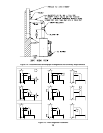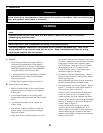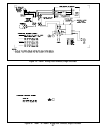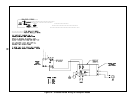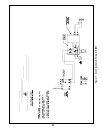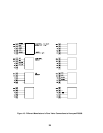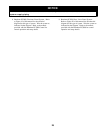
18
IV. Venting
A. General Guidelines.
1. Vent system installation must be in accordance with
these instructions and applicable provisions of local
building codes. Contact local building or fire
officials about restrictions and installation inspec-
tion in your area.
2. The RSA Series is designed to be vented into a
fireclay tile-lined masonry chimney or chimney
constructed from type-L vent or a factory built
chimney that complies with the type HT require-
ments of UL103. The chimney or vent pipe shall
have a sufficient draft at all times, to assure safe
proper operation of the boiler. See Figure 12 for
recommended installation.
a. Install a draft regulator (supplied by installer)
following the instructions furnished with the
regulator. See Figure 13 for alternate regulator
locations.
b. With any new or replacement installation the
chimney has to be considered. Chimneys that
have a high heat loss become less suitable as the
heat loss of the home goes down and the
efficiency of the boiler goes up. Most homes
have a chimney appropriate for the fuel and the
era in which the home was built. That may
have been a coal fired or an inefficient oil fired
boiler built into a home without insulation or
storm windows. With increasing fuel prices that
home probably has been insulated and fitted
with storm windows so that the heat loss of the
home has been reduced. This requires less fuel
to be burned and sends less heat up the chimney.
A new boiler probably has a higher efficiency
than the boiler being replaced. That probably
means that the stack temperature from the new
boiler will be lower than that from the old boiler
and with less room air being drawn up the
chimney to dilute the stack gases. The combina-
tion of a large uninsulated chimney, reduced
firing rate, reduced firing time, lower stack
temperature and less dilution air can, in some
cases, contribute to the condensing of small
amounts of water vapor in the chimney. Such
condensation, when it occurs, can cause chim-
ney deterioration. In extreme cases, the chim-
ney may have to be lined to insulate the chimney
and thus prevent the condensation. The
addition of dilution air into the chimney may
assist in drying the chimney interior surfaces.
A massive chimney on a cold, or exposed
outside wall may have produced adequate draft
when it was fired with a higher input and
greater volumes of heated gases. With reduced
input and volume, the draft may be severely
affected. In one instance our research showed a
new chimney of adequate sizing produced only -
.035” W.C. after 30 minutes of continuous firing
at 13.0% CO
2
. Outside wall chimneys take
longer to heat up and can have .00” W.C. draft
at burner start-up. You may have to consider a
special alloy chimney flue liner with insulation
around it and stabilizing draft cap or even a
draft inducing fan in severe cases.
c. For the same reasons as in (2.) above, heat
extractors mounted into the breeching are not
recommended.
3. For minimum clearances to combustible materials
refer to Figure 2.




